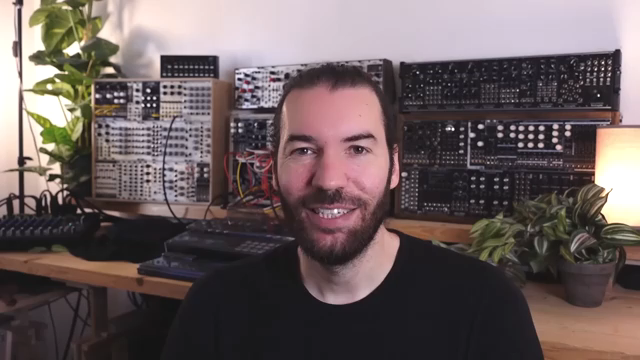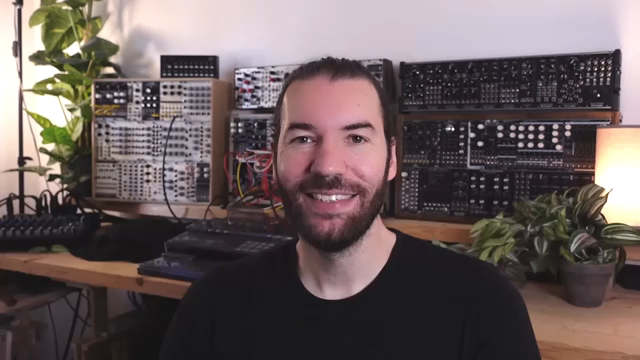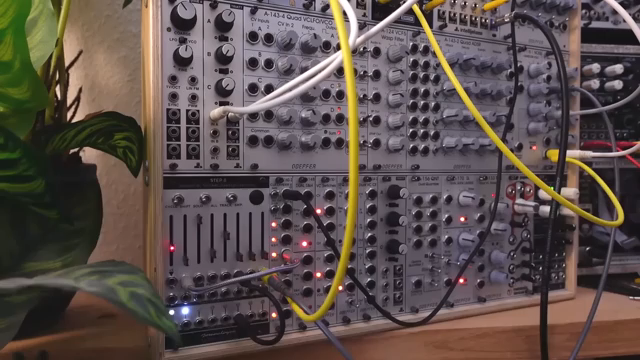Ever thought sequencers were just for melodies? Think again! In his latest video, MonotrailTechTalk delves into the world of modulation sequences with his usual clarity and depth. It’s a guided tour through creative signal routing that transforms a simple patch into a living organism. Whether you’re a modular newbie or a seasoned patch wizard, this is one journey you don’t want to miss.

30. April 2025
JET
The Modulation Masterclass with MonotrailTechTalk
An Overlooked Tool
Sequencers, my dear synth enthusiasts, are not just the bread and butter for creating melodic lines. MonotrailTechTalk starts off by setting the stage for a new perspective: using sequencers as potent modulation devices. Any sequential voltage source can be harnessed to breathe life into a patch, morphing static sounds into dynamic sonic landscapes. This isn’t just about shifting pitches; it’s a foray into the realm of modulation where rhythmic sound design and complex sound movement take the spotlight. This video promises a smorgasbord of modulation tricks, inviting viewers to rethink how they approach their modular setups.
Direct Modulation Magic
Here’s where MonotrailTechTalk dives deep into the thick of it, demonstrating direct modulation’s power in a modular setup. By using a simple sequence to directly tweak parameters like VCA, filter, or oscillator pitch, he showcases how even minimal modulation can yield significant changes. When employing a regular sequencer alongside another for modulation, the result is a shifting landscape where modulation shifts relative to the melody. This clever setup can lead to intriguing patterns, where things like filter modulation lead to beguiling accent shifts, while VCA modulation plays with volume dynamics at each sequence step.
In one example, MonotrailTechTalk presents a dual oscillator voice controlled by a main sequencer that creates a melody and triggers an envelope to open the filter and VCA. Simultaneously, the control signal of another sequencer becomes a modulation tool, adding complexity to the sonic palette by modulating various parameters directly. He also advises on prudence: ensure inputs have attenuators to adjust modulation depth accurately.
The possibilities don’t end there; just about any module within the voice can be modulated for even more unique expressions. Whether it’s a wave folder, stereo delay, or mixing FM after folding the signal, the realm of possibilities expands. This section serves triple duty, explaining concepts that are as useful for beginners as for those already knee-deep in cable spaghetti.

"Just using a simple sequence to modulate parameters directly is already a powerful trick."
Going Indirect

"Here's the basic dual oscillator voice again. This time though the envelope isn't modulating the filter and VCA directly, but it's sent through a VCA first."
Next, MonotrailTechTalk turns his focus to indirect modulation, adding another layer of sophistication. Here, VCAs become the secret weapon, allowing modulation depth to be dynamically controlled. By routing envelopes or LFOs through VCAs first, you can manipulate how intensely they affect later stages. This step not only introduces nuance but allows for accent shifts by controlling the depth of filter and VCA modulation.
These indirect techniques can also pair with direct modulation for even more complex textures. In one scenario, an inverted version of a modulation sequence slows down an LFO, creating a dynamic interplay in modulation depth. Such setups are ripe for exploration with audio-rate signals, and the depth control extends its potential to FM and AM tricks. A classic voice benefits greatly from a modulated oscillator pitch or amplitude, again utilising VCAs to great effect.
MonotrailTechTalk doesn’t stop at merely outlining these techniques; he backs them up with practical examples. Whether through audio rate signal control or tuning an oscillating sequence to modulate pitch, the strategies presented turn any modular setup into a sound designer’s playground. These insights are invaluable for those itching to push the boundaries of what their synths can achieve.
Beyond the Basic Beat
Once you’ve mastered the basics, MonotrailTechTalk guides you through a labyrinth of advanced ideas that turn your modular experiments into professional-grade masterpieces. Adding modular tools like clock dividers or slew limiters can expand your modulation repertoire, creating distinctive rhythms and textures that eschew traditional step sequencing. For instance, using a modulation sequencer as the master clock introduces layers of modulating steps within each melodic phase, amplifying complexity with every beat change.
The true magic lies in re-routing the modulation sequence through various utilities, bringing a dimension of unpredictability. A modulation sequence can control a panner to decide which path an LFO might take, or a crossfader enriching audio destinations with new flavours. Conclude this section by considering how even simple modulation can lead to grand cinematic soundscapes. The potential for modulation to craft elaborate auditory stories is enormous.
As MonotrailTechTalk wraps up with towering enthusiasm, it’s clear his exploration doesn’t just satisfy the curious; it beckons creators to capture some of that LEGO-like joy of building something astonishing. His video isn’t merely a tutorial but a launchpad for sparking innovation within one’s patchwork. A reminder that in the world of modular, our only limit is our imagination.

"The modulation sequencer is used as the master clock. The clock is sent through a divider and used to sync the melodic sequencer at a slower rate."
Latest articles
Watch on YouTube:
https://www.youtube.com/MonotrailTechTalk
Sponsored links:
If you purchase via these links, we may earn a small commission – at no extra cost to you.
🔗 Check price on Amazon